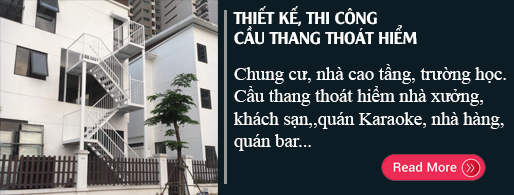Zimbabwe Republic
Basic information of the Zimbabwe Republic
BASIC DOCUMENTS
REPUBLIC OF DIM-BA-BU-EE
Essential:
• Country name: Republic of Zimbabwe (The Republic of Zimbabwe)
• Capital of Harare
• Geographical location: Zimbabwe (Zimbabwe) in southern Africa, north of Dam-bi-Zambia (Zambia), east of Mozambique (Mozambique), Western borders – Botswana (Botswana) and South Africa.
• Climate: subtropical, mild, less rainy
• Area of 390,580 km2
• Population of 12.5 million people (2009)
• English language (official)
• Christian religion (25%), Traditional religion (24%), mixing these two beliefs (50%)
• Currency unit of Zimbabwe Dollar
• President: Robot Ga-bri-en Mu-ga-ga (Robert Gabriel MUGABE)
• Prime Minister: Moscow Ti-wine-giro (Morgan TSVANGIRAI)
• Secretary of State Sim-baroque Mum-ben-ghê-guy (Simbarashe MUMBENGEGWI)
• National Day April 18, 1980
History:
Zimbabwe means “stone building”, a long-standing historical and cultural tradition in Africa. IV century Venda people and tribes from the highlands and Ho Lon came to live by raising animals. In the eighth century, the Monomotapa Kingdom was established on the basis of the Shona tribe, with its famous culture including the Great Tripoli, Ellipse temple, Acroplo fortress, Victoria Falls, Kariba dam. In 1895, British colonists came to occupy and changed the name of present-day Dimoval territory to Rhodesie South.
In 1957, ANC was founded by J. Nkoma to fight for independence. In 1961, the ANC was banned from operation and changed to ZAPU (African-Cuban People’s Alliance). In 1963, ZANU (African Nationalist Federation of Zimbabwe) seceded from ZAPU led by R.Mugabe, a policy of armed struggle for independence. In 1979, England, America, and Zimbabwe signed the Ceasefire Agreement (December 21, 1979) in London. The first general election was held in February 1980. The patriotic front won a great victory, accounting for 77/100 seats in the National Assembly. On April 18, 1980, Zimbabwe declared independence, establishing the Republic of Zimbabwe by Robert Mugabe, ZANU Party President as Prime Minister and Defense Minister, Mr. Canaan. Banana as President.
Politic:
a. Domestic:
Institution: Presidential Republic, Multi-Party. The current ruling party is ZANU-PF (African National Association of Zimbabwe – Patriotic Front) led by R.Mugabe. After independence, Zimbabwe focused on strengthening national independence and economic recovery. In 1987, ZANU and ZAPU parties merged into ZANU-PF, amended the constitution and elected Robert Mugabe to be the executive president. In 1996 and 2002, President Dmitry R.Mugabe twice re-elected President for two consecutive 6-year terms.
The land reform program – the confiscation of white land, redistribution for black people – caused a wave of evacuation of white people, causing the West to angrily lead to the internal situation of Dimia. Unstable. Opposition factions took advantage of the situation of inciting riots and strikes, protesting the government, demanding President Mugabe to resign. In 2008, power struggles among factions at the presidential election exacerbated the country’s political and security instability. Although ZANU – PF signed the Power Sharing Agreement with MDC, the two sides have not yet agreed on the amendment of the Constitution and the general election deadline.
b. Foreign Affair:
Zimbabwe carried out independent foreign policy, self-control, KLK, attaching importance to relations with regional countries, especially Southern African countries, balancing relations with major countries. In the framework of SADC, together with Angola, Namibia, and Zimbabwe have actively helped the Democratic Republic of Congo against the neighboring Rwanda (Rwanda), Uganda (Uganda). troops enter the territory to help opposing forces.
Zimbabwe is a member of 44 major international organizations (UN, AU, KLK, SADC, COMESA, ACP, WTO, G77, G15, AfDB, IMF ..), playing an important role in protect the rights of developing countries in the process of globalization. In 1986, as President of the KLK Movement, Zimbabwe tried to contribute to strengthening solidarity and maintaining the movement’s goal.
Economy
Zimbabwe is a country with economic potential and natural resources: chromium, gold, asbestos, nickel, copper, iron, vanadium, litium, platinum, coal … Tobacco, cotton and sugar are the faces Leading export of Zimbabwe.
After independence, the government advocated independent economic development, implemented many land reforms, labor, settlements, income, building medical and educational facilities. The State holds important economic sectors (banks, mines, natural resources, import and export); liberalizing the economy, encouraging the private sector, attracting investment capital, technical assistance, and encouraging joint ventures with foreign countries; promoting regional cooperation, building oil pipelines through the port of Beo-ca (Becca), Macau (Maputo) of Mozambique (Mozambique), restoring railways through countries, each step up economic cooperation with Africa, promoting South-South cooperation.
Since 2000, the economy of Zimbabwe has fallen into recession. In April 2006, the Government launched the “Economic Recovery Program” but failed. In 2008, the economic crisis peaked: inflation rate above 100,000%, unemployment rate 80%. Since 2009, Zimbabwe has allowed the use of foreign currencies (Rand South Africa, Pula Botswana and US Dollars) in trading to limit inflation and stabilize consumer prices. The economy of Zimbabwe in 2010 and 2011 grew positively (9% and 6% respectively) despite many risks. Zimbabwe is currently the country with the highest inflation rate in the world, high poverty and disease rates.
• GDP (in purchasing power): 6 billion USD (2011)
• GDP per capita (in purchasing power) 500 USD (2011)
• 6% growth (2011)
• Importing billions of USD 4.2 billion (2011)
• Export of 2.7 billion USD (2011)
• 6 billion USD foreign debt (2011)
Relations with Vietnam:
I and Dimigrade established diplomatic relations on July 24, 1981 and opened our Embassy in Harare in March 1986. In April 1990, we withdrew the Embassy because of economic difficulties. Our Embassy in South Africa concurrently took on the post of Zimbabwe and the Ambassador presented the National Assembly in October 2010.
Delegation exchange: on your side: Politburo member ZANU-PF, Minister of Information Dimension Nathan Shamuyarira (1987); President R.Mugabe (2001); on our side: Minister of Light Industry Dang Vu Chu (1993) Foreign Minister Nguyen Manh Cam visited Dim Three-bu-ee (1995).
Signed Agreements: Trade Agreement, Framework Agreement on Economic, Commercial, Cultural and Scientific – Technical Cooperation (2001); agreement to establish a working group of the two Foreign Ministries (2001).
Zimbabwe wishes to cooperate with us on the exploitation of agricultural land in Zimbabwe to serve the food reform program, using Vietnamese experts on agriculture, health and some other areas.
Previous bilateral trade turnover was low (approximately 2 million USD / year). Since 2010, trade exchange has prospered with an exchange of about 12 million USD / year. I import mainly from Zimbabwe: cotton, cashew nuts, machinery and equipment, tools and spare parts, tobacco raw materials …; We export mainly to Zimbabwe: vegetables, rice, confectionery, cereals, machinery, precious stone and precious metal products.
Vietnamese Embassy in South Africa (Acknowledgments of Zimbabwe):
Address: 87 Brooks Street, Brooklyn, Pretoria
Postal code: 13692 Hatfield 0028, South Africa
Phone: (27-12) 362 8119/362 8118
Fax: (27-12) 362 8115
Email of the great country, consulate in Vietnam.
Email: vietnamembassy.sa@gmail.com
Featured articles
Ecological characteristics of the flute jelly
PASSING THROUGH THE GHOSTLY FOREST GAME INTRODUCTION
Vietnamese Ao Dai, Introduction Moc Moc Store
Banner Mid-Autumn free download
Introduction Corn Noodles of Lang Son Province of Vietnam
Introducing Phuc Long printing company in Vietnam
NEW
What is HTML5? Superior web design and development with HTML5
Producing and creating entertainment games
Introduction Canonical shipper game








